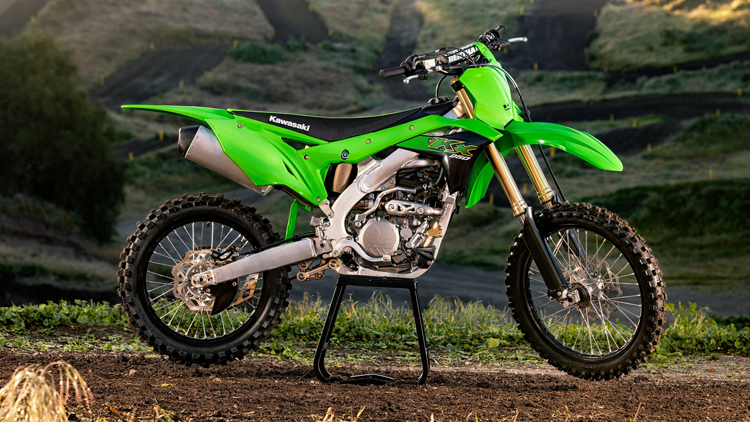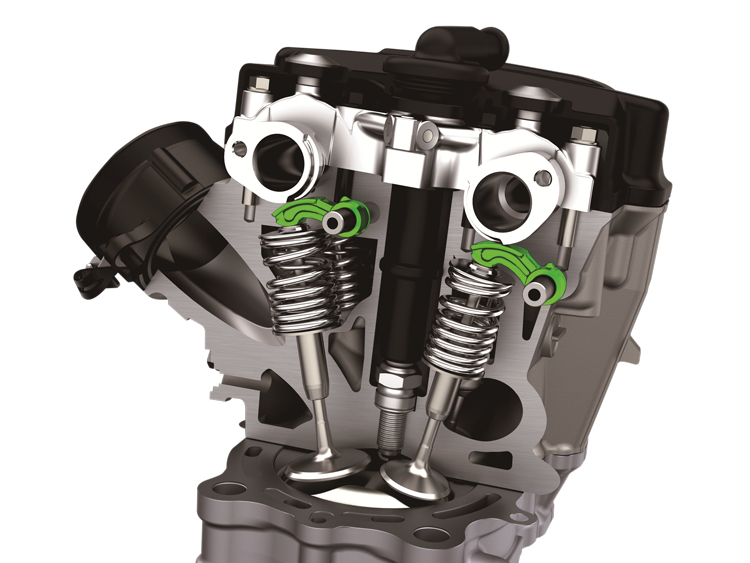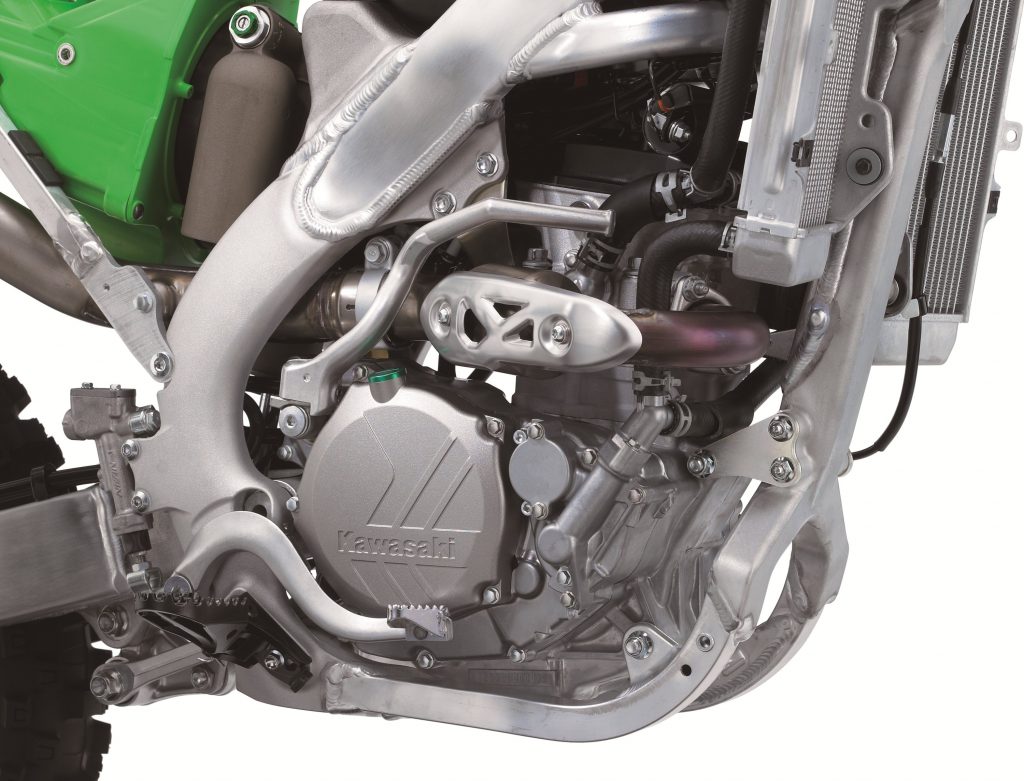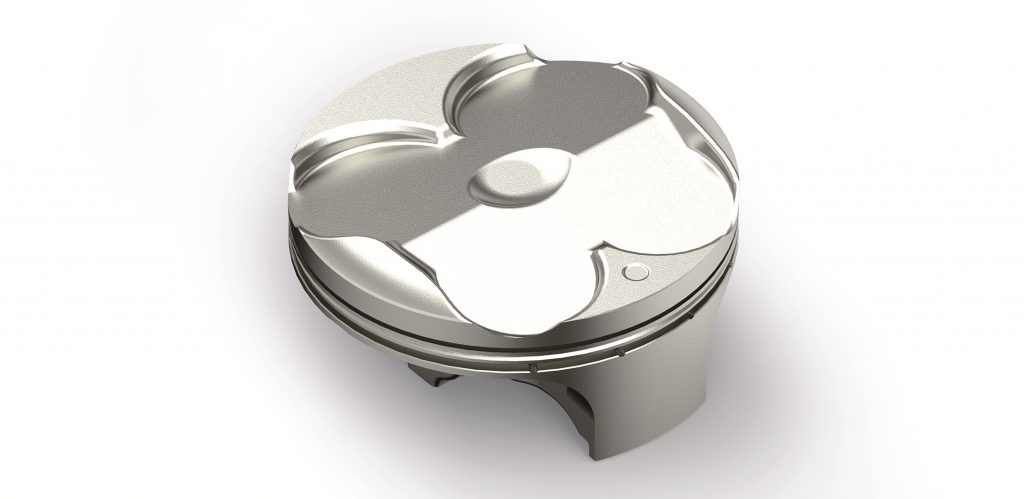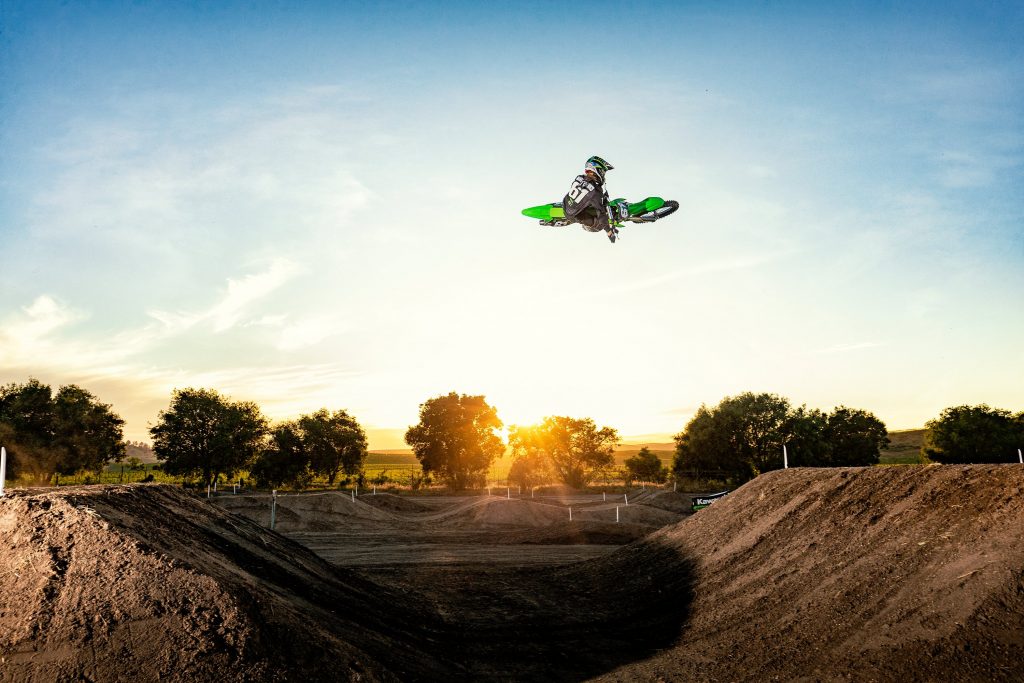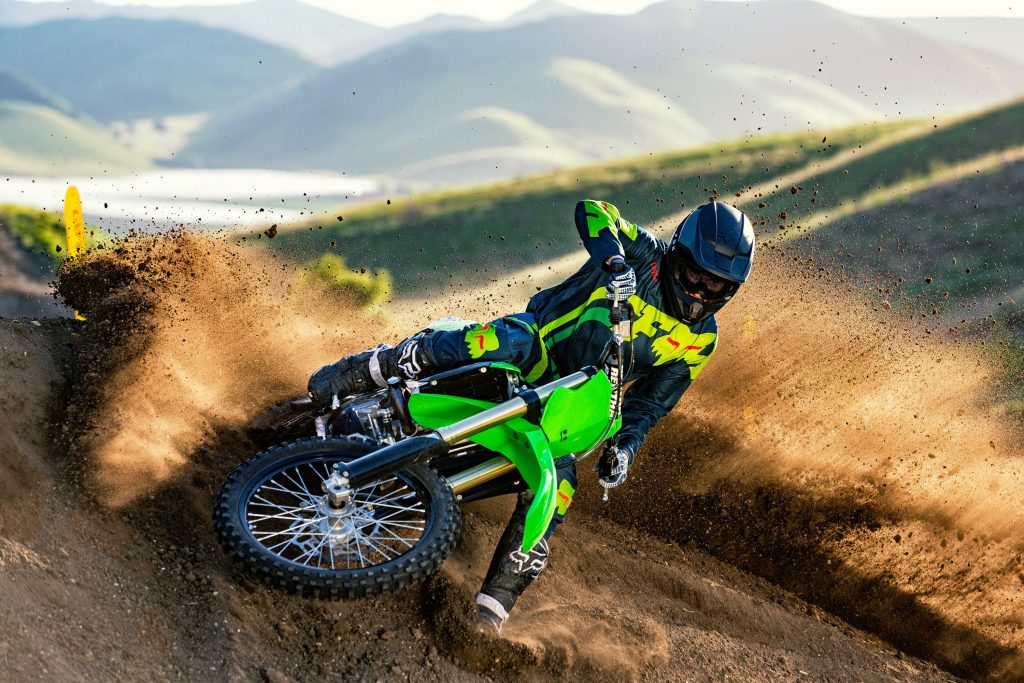2020 Kawasaki KX250 and KX450
New engine and suspension for the 250 and new green side panels for the 450
We were not expecting any big changes with Kawasaki’s KX450 since it was an all-new motorcycle for 2019; and a really good one to boot. We kind of wished for minor suspension setting updates or maybe spring changes yet, in the end, the Green Machine kept the very popular racer going into 2020 pretty much unchanged. Our DBT 2019 KX450 liked a stiffer fork as did several other media outlets but Kawasaki may have already finalized 2020 settings or for the masses they felt standard works best across the board.
Also be aware that if you are reading this, a 2020 KX should already be on your dealer floor or will be there any day.
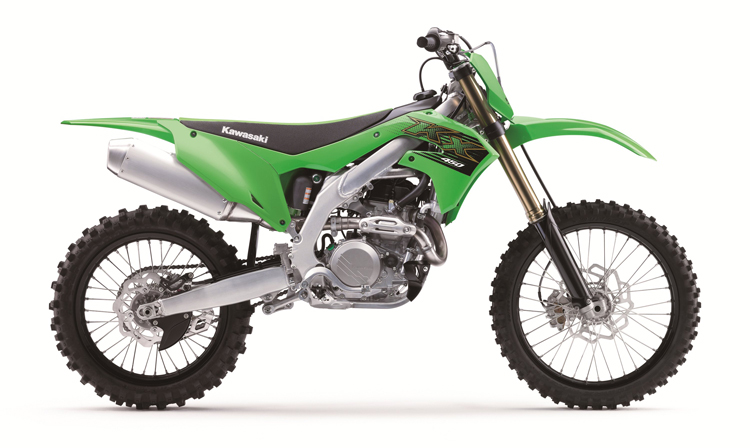
2020 KX450 returns with new colors
If you want to read a test on the 2020 KX450, you can refer to DBT’s 2019 first impression here or the 2019 DBT 450 shootout.
DBT 2019 KX450 First Impression Link
2019 DBT 450cc Comparison/Shootout: It’s a long read but has loads of information
Now for the 2020 KX250. There were many rumors and some were expecting a total “all-new motorcycle” or simply lots of changes – they got the changes. Yes there are a host of updates to the engine and suspension yet the chassis pretty much remains the same except for suspension and engine mounts. Engine performance updates yes, but the cases still only offer a right-leg starting device (kickstart). But kids are young and strong and do they really need an old-man magic button? No, unless you are in a race and you stall it and you are already beat-LOL.
So what’s new, let me tell you.
• NEW engine with increased peak power
• NEW revised bore and stroke
• NEW finger-follower valve actuation
• NEW larger-diameter intake and exhaust valves
• NEW larger-bore high performance piston (78.0 x 52.2 mm)
• NEW low-friction crankshaft pin plain bearings
• NEW stronger cam chain and relocated cam chain tensioner
• NEW shorter intake funnel
• NEW larger throttle body
• NEW shorter exhaust system design
It seems as if the top-end, lower-end, and intake take on the brunt of the changes. New bore and stroke and a KX450-style head with a Follow-Finger design and larger valves lead the charge. The Follow-Finger design is said to allow for a higher rev cap and more aggressive cam profiles. The Follow-Finger is also DLC coated for that silky smooth action. The new engine sports a (78.0 x 52.2 mm) (Bore/Stroke) and with increased compression. And like a few other manufacturers, they too have worked on lowering friction at the crankshaft pins. Kawi has also designed new engine hangers for chassis flex and feel.
The cylinder is offset 3 mm forward to help reduce mechanical loss and increase performance. They also beefed up the cam chain and relocation of the cam chain tensioner to the cylinder head, which offsets the increased loads from the more aggressive camshafts and higher revving engine. Like we said above, cases and tranny are the same, everything that makes HP has been updated or redesigned. The new cams also received a thin and highly durable gas soft-nitride treatment to reduce wear and increase high rpm reliability. Valves are also titanium in the intake and exhaust. The KX250 also still retains dual fuel injectors.
As for the chassis, the ’20 KX250 did not receive a chassis update like some had anticipated and the KX250 still runs different plastics than the KX450. Kawasaki might be utilizing the new head, cylinder offset, bore, and stroke to go into a new 2021, possibly electric start cases and new chassis with updated plastics, yet this is totally speculative.
Suspension and Braking updates:
• NEW 48 mm KYB coil-spring fork
• NEW KYB shock unit complements front fork
• NEW Uni-Trak® rear suspension link
• NEW stiffer front and rear spring rates
• NEW revised front brake pad material
• NEW larger-diameter 250 mm rear disc
• NEW rear brake master cylinder
Kawasaki swapped out the Showa SFF 2 spring for for a 48mm KYB design. It seems like all of the Japanese brands are going back to simple two-sided spring forks over fancy single-sided designs or air forks. Not sure based on the specs how similar this fork is to the Yamaha SSS fork but it might be in the same family.
Below is some detailed PR from Kawasaki regarding the new KX250
ENGINE:
Acclaimed for its high output and smooth power delivery, the KX250 features a new engine with improved power, an even more potent high rpm range and a higher rev limit. Tuned to best suit race-experienced riders, the 249cc liquid-cooled, four-stroke engine focuses on more top-end rev thanks to improvements by Kawasaki’s factory racing efforts. The new engine features a revised bore and stroke that measures 78.0 x 52.2 mm. The wider bore enables the use of larger intake and exhaust valves and provides greater flow for high rpm performance.
Like the design found on the KX™450 motorcycle, the KX250 now utilizes the finger-follower valve actuation – a valve train designed by Kawasaki’s World Superbike engineers. This design increases the rev limit and allows for the use of more aggressive cam profiles, which contributes to high rpm performance. The change to finger-follower valve actuation reduces the valve train mass compared to a tappet-style actuation. A diamond-like carbon coating on the finger followers helps protect against wear. Complementing the more aggressive cams are larger-diameter intake and exhaust valves with increased lift, flowing more air and contributing to improved power. Straighter intake ports contribute to increased intake efficiency. The new cams benefit from a thin and highly durable gas soft-nitride treatment to reduce wear and increase high rpm reliability. Lightweight titanium valves reduce reciprocating weight and offer high rpm reliability. The cylinder is offset 3 mm forward, reducing mechanical loss and increasing engine performance. Further increasing reliability is a stronger cam chain and relocation of the cam chain tensioner to the cylinder head, which offsets the increased loads from the more aggressive camshafts and higher revving engine.
A plateau honing process of the cylinder bore results in a smooth surface with good oil-retention. The smooth surface also helps to reduce mechanical loss and improve power. A new, larger-bore, high-performance piston features the same design used by Kawasaki’s factory racers and contributes strong performance at all rpm. A short skirt, reinforced external ribs and the use of a bridged-box piston, featuring internal bracing, allow for a lightweight and strong piston design. The piston’s revised crown design helps achieve the engine’s higher compression ratio, while a dry film lubricant coating on the piston skirts reduces friction at low rpm and helps with the piston bedding-in process. To reduce mechanical loss and lift overall performance, the crankshaft pin has been fitted with new low-friction plain bearings.
The airbox construction has been revised and features a shorter, tapered intake funnel, contributing to increased high rpm performance. The KX250 remains the only production motocross bike with dual injectors, an injector downstream of the throttle valve that is tasked with delivering a smooth, instant response, and a second, upstream injector located close to the airbox for a significant contribution to engine output at high rpm. The exhaust system length has been shortened to help increase high rpm performance and the hydro-formed joint pipe now features a reverse taper design. A larger throttle body flows a greater volume of air and provides a boost in high rpm performance. Adding to Kawasaki’s engineering efforts for increased airflow is the repositioning of the intake duct for an even straighter approach for intake air. The downdraft-style intake routing increases the intake air’s approach angle into the cylinder, improving cylinder-filling efficiency and increasing the engines power.
CHASSIS
NEW lower front engine mounts
The slim aluminium perimeter frame uses a lightweight construction composed of forged, extruded and cast parts that contribute to light, nimble handling. Thanks to new lower front engine mounts, changing from a through bolt to stud bolts at the front of the crankcase, the overall frame rigidity has been revised with improved ability to absorb bumps. The center of gravity and key dimensions such as swingarm pivot, output sprocket and rear axle locations have all been carefully selected so that the rear tire drives the bike forward.
SUSPENSION AND BRAKES
For 2020, the KX250 is equipped with new large diameter 48 mm KYB inverted coil-spring front forks that offer improved action at the initial part of the fork stroke. The forks feature large-diameter inner tubes, enabling the use of 25 mm damping pistons and delivering smooth action and firm damping. A Kashima Coat on the forks’ outer tubes creates a hard, low-friction surface to help prevent wear abrasion on the inside of the tubes, ensuring the sliding surfaces remain smooth over time, while protecting the outside against corrosion. The lubricating material in the coat contributes to smoother suspension action and a better overall ride feel.
On the rear, a new KYB shock unit complements the new front fork. The rear shock features dual compression adjustability, which allows high-speed and low-speed damping to be tuned separately. Kashima Coat on the tank cylinder helps prevent wear abrasion and reduces friction for smoother suspension action. A new Uni-Trak® rear suspension system mounts the suspension arm below the swingarm, allowing a longer rear suspension stroke. The longer stroke allows for more precise suspension tuning. In order to match the KX250’s more powerful engine, the front forks and rear shock feature stiffer overall spring rates.
Contributing to the numerous factory-style racing components on the KX250 motorcycle are petal disc brakes. Up front is an oversized 270 mm Braking® brand rotor, which delivers strong braking force and superb control. A revised front brake pad material, like that found on the KX450, delivers linear brake force application, helping to facilitate control.
On the rear, a new larger-diameter 250 mm Braking brand disc contributes to stronger stopping power, complementing the large front disc. A lighter rear brake master cylinder, like those found on the KX450 motorcycle, powers the larger disc. The petal style discs contribute to both sporty looks and help deflect debris. A rear caliper guard helps protect the caliper from damage.
ERGO-FIT® Adjustable Components
Kawasaki continues its unmatched commitment towards providing riders with class-leading comfort thanks to its ERGO-FIT® adjustable handlebar mounting system and footpegs to fit a variety of riders and riding styles. The handlebars feature four-way adjustable mounts. The multi-position handlebars offer two mounting holes with 35 mm of adjustability, and the 180-degree offset clamps boast four individual settings to suit different size riders. The footpegs feature dual-position mounting points, with a lower position that reduces the standard setting by an additional 5 mm. The lower position effectively lowers the center of gravity when standing, and reduces knee angle when taller riders are seated.
BODYWORK & SEAT
NEW factory-inspired green bodywork
Complementing the improved power and precise handling of the KX250 is minimalistic bodywork that includes slim radiator shrouds for an aggressive race-ready look. A flat fuel tank and seat design help to aid in a more seamless design, making it easy for riders to move around on top of the bike.
For 2020, the number plates and airbox of the KX250 motorcycle have been updated to the color green, resembling the same look found on the bikes used by the factory racing team. The front and rear fenders and fork guards implement a sharp design that makes the bike look more compact. Adding to the distinctive Kawasaki factory race team look is a green oil cap, generator cover plugs, green alumite suspension adjusters and black alumite rims.
Kawasaki Team Green™ Racer Rewards
Kawasaki Team Green Racer Rewards return for the 2020 racing season with nearly $7.5 million in contingency available for eligible KX riders. Team Green’s Racer Rewards program will be available at more than 200 races with more than $5.4 million in payouts. Off-Road racers will also be rewarded at nearly 250 events with more than $2 million available.
Support DBT, Shop and search for products through the link below:
